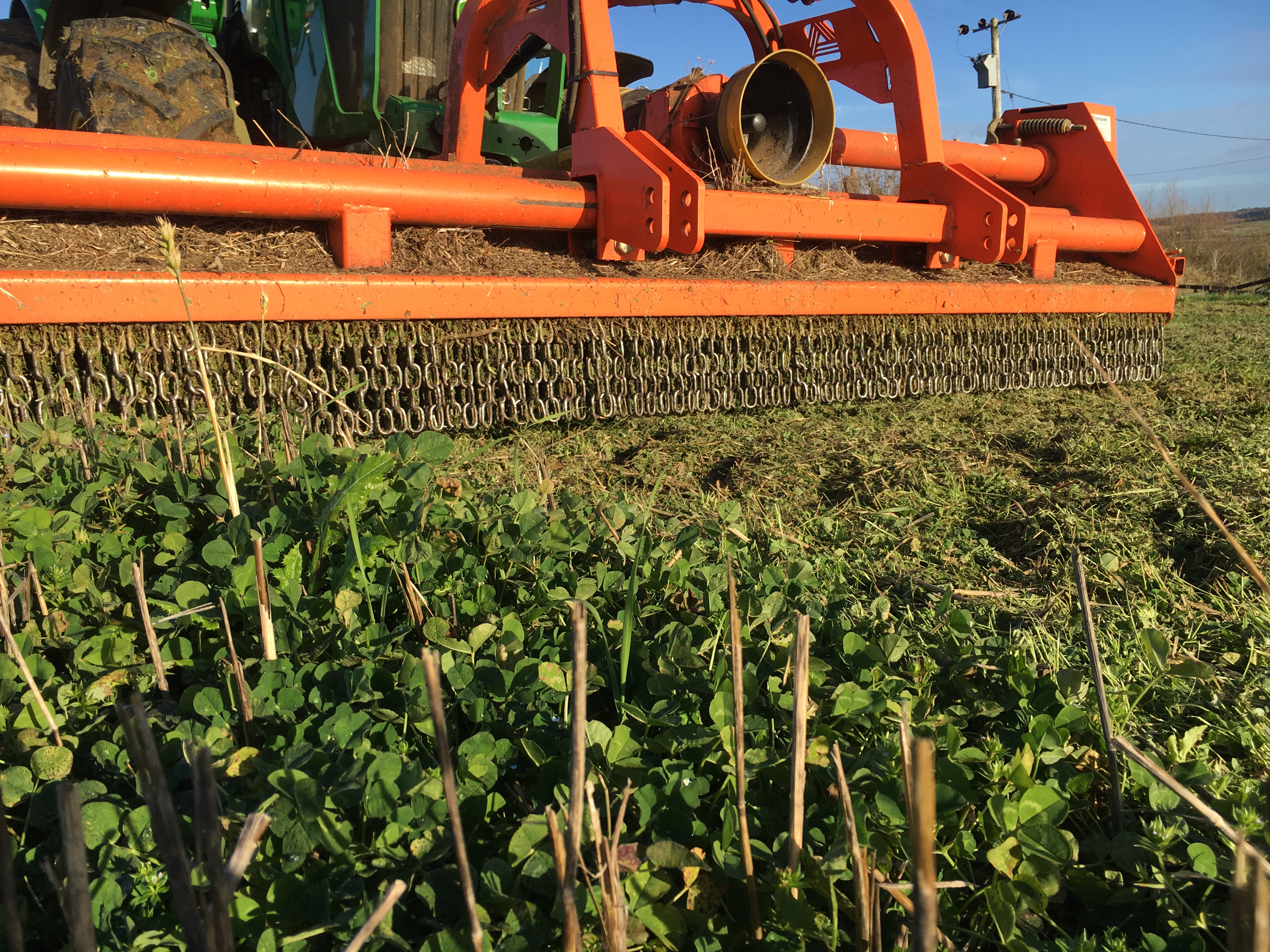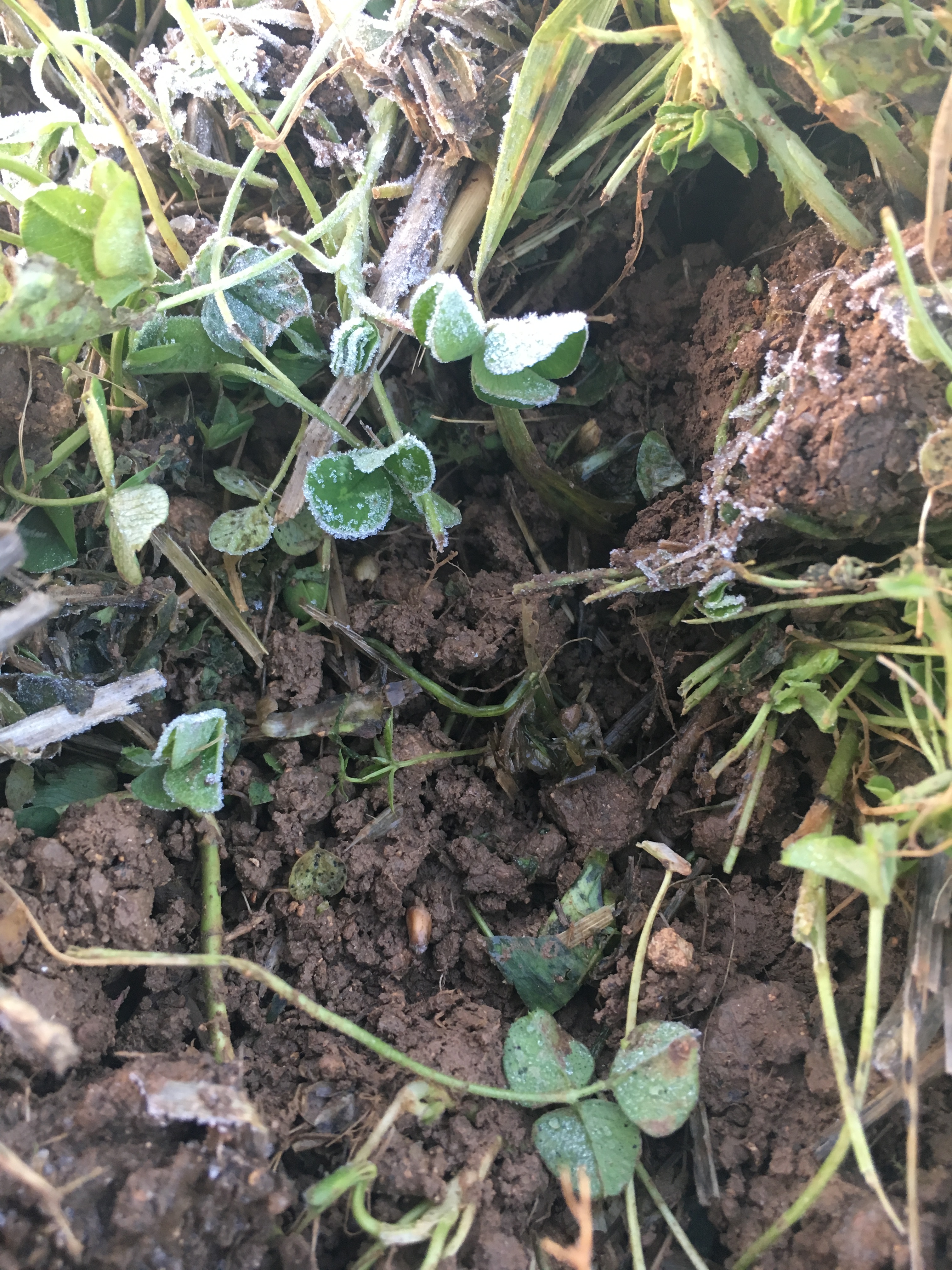



.JPG)



As part of our ongoing trials and research at Honeydale Farm, for the past three years now, we have been experimenting with undersowing spring sown cereals with fertility building legumes. This is by no means a new technique, with many of our customers remarking that it’s something their grandfathers did as standard.
The theory behind undersowing a legume mixture is to create a low growing cover that helps suppress weeds and build soil fertility, but does not interfere with the cereal crop.
During the spring of 2016 and 2017 we undersowed an area of spring wheat with a yellow trefoil (black medic) & white clover mixture (small to medium leaved variety, aberpearl).
The spring wheat was drilled at a slightly reduced rate of 50 kgs per acre (125 kgs per ha) in early April and the yellow trefoil / white clover understory mixture was shallow drilled the same day. The drill coulters were almost lifted out of work and the small legume seeds were dropped on the surface. The field was then well rolled.
The spring wheat and understory mixture soon germinated. Having the cereal growing taller than the legume mixture suppressed the mixture’s growth, ensuring it didn’t cause issues at harvest. However once the cereal was harvested, the access to space and light rapidly pushed on the growth of the yellow trefoil & white clover. The mixture was left in during the autumn and winter to provide soil cover and reduce nutrient leaching, and then grazed hard in the early spring.
Pushing the boundaries with a living mulch
With such good results, we decided to push the boundaries and see if we could take it one step further. Rather than terminate the yellow trefoil & white clover cover from the previous spring’s sowing, as would usually happen, we left it in place, aiming to establish the new spring cereal sowing into the existing cover. The yellow trefoil & white clover was topped as low as possible in early April and a robust rate of spring oats was direct drilled at a rate of 75 kgs per acre (187.5 kgs per ha).
The spring of 2016 was particularly dry during April and May, and this resulted in a very slow germination of the oats, and strong regrowth from the already established legume mixture, which had access to moisture deeper in the soil profile. This strong regrowth inhibited the growth of the spring oat crop. However the spring of 2017 had plenty of moisture, although the soil temperatures were low in to late April. The existing legume mixture was again topped hard and direct drilled with spring oats during April. At the time of writing (May 22nd) it appears the strong regrowth may again cause too much competition for the new cereal seedlings.
However, as part of the experiment we also topped an area of the same legume mixture in the autumn of 2017, to see if a winter wheat would establish more reliably, as the growth of the legume mixture slowed down with the lower soil temperatures. This trial worked much better, with the winter wheat establishing with the legume mixture and despite the cold temperatures of winter 2017/18, it established sufficently enough to grow away from the mix in the spring.
With the current interest in direct drilling and the benefits of creating a living mulch, it seems well worth exploring this method, so we also plan to experiment with undersowing different legume species, such as a pure stand of small leaved or micro white clover, the least agressive clover to repeat our direct drilling spring cereal experiment.
Date Posted: 18th January 2019



